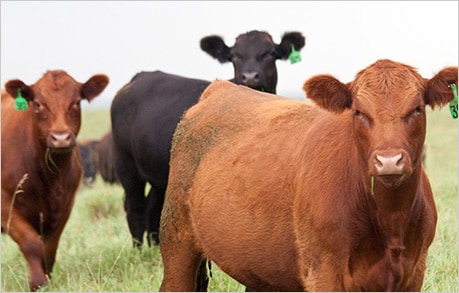Maximize Profits with Informed Decision-Making

Image: www.youtube.com
The cattle market is a volatile and dynamic arena where opportunities abound for savvy investors. Cattle options present traders with a powerful tool to mitigate risk, enhance gains, and optimize returns. In this comprehensive guide, we delve into the intricate world of cattle options trading, empowering you with knowledge that will guide you toward successful endeavors.
Cattle Options: An Overview
Cattle options are derivative contracts that grant the holder the right, but not the obligation, to buy (call option) or sell (put option) a specified quantity of cattle at a predetermined price (strike price) on or before a specific date (expiration date). These versatile instruments offer traders the flexibility to profit from fluctuations in cattle futures prices without the risks and responsibilities associated with owning actual cattle.
Understanding Cattle Options Basics
The dynamics of cattle options hinge on several key elements:
- Premium: The upfront fee paid to acquire an options contract.
- Strike Price: The price at which the underlying cattle futures contract can be bought (call option) or sold (put option).
- Expiration Date: The date after which the option contract becomes worthless.
- Option Type: Call options grant the right to buy, while put options grant the right to sell.
Trading Cattle Options: A Step-by-Step Approach
- Assess Market Conditions: Conduct thorough market research and analysis to identify potential trading opportunities.
- Analyze Options Chains: Study the available options contracts, considering strike prices, expiration dates, and implied volatility.
- Determine Your Strategy: Define your trading goals (e.g., hedging, speculation) and select the appropriate options strategy.
- Calculate Risk Profile: Determine the potential profits and losses associated with each option strategy, ensuring alignment with your risk tolerance.
- Open and Monitor Your Position: Execute your trade by opening an options contract. Monitor market movements and adjust your position as needed.
- Exercise or Close Your Position: Upon reaching your predetermined target or expiration date, exercise your right to buy or sell cattle futures, or close your position by selling your option contract.

Image: www.cmegroup.com
Advantages of Cattle Options
- Risk Management: Options allow traders to hedge against downside market fluctuations, protecting them from potential losses.
- Flexibility: Traders can customize options strategies to suit their risk appetite and trading goals.
- Profit Potential: Options offer leveraged exposure to cattle futures, enabling traders to amplify potential returns compared to physical ownership.
Recent Trends and Innovations in Cattle Options Trading
- Technology Advancements: Online trading platforms provide real-time market data and automated execution, enhancing efficiency and precision.
- Expansion of Options Contracts: Exchanges have introduced additional expiration dates and strike prices, offering greater flexibility and trading opportunities.
- Market Volatility: Unpredictable market dynamics have led to increased volatility in cattle futures, creating prime conditions for options trading.
Trading Cattle Options

Image: www.farmersjournal.ie
Conclusion
Cattle options are powerful tools that empower traders to navigate the ever-changing cattle market and optimize their financial returns. By understanding the fundamentals of options trading, carefully analyzing market conditions, and employing appropriate strategies, traders can unlock the potential of this lucrative opportunity. As you delve deeper into the world of cattle options trading, remember that knowledge, skill, and a proactive approach are key to achieving long-term success.






